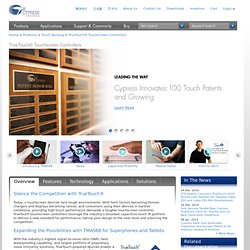

Retrospection » Blog Archive » Getting ADB working with the WiMM One. My first hurdle in starting development with the WiMM One was getting it recognized via adb. It took a while to find out the steps needed to get it working, but hopefully these will be helpful for someone: Ensure you have the latest driver package installed via the Android SDK.If you updated the driver package, and you’re running Windows, you may have to update the driver of the device in the device managerNext, if you’re on any platform, run the following commands in your terminal (if you’re on Mac or Linux, you may have to prefix some of these commands with ./ if you find they do not work): cd [ANDROID-SDK-PARENT-DIRECTORY]/android-sdk/toolsandroid update adbcd ..
/platform-toolsadb kill-serveradb start-server (Note: If on Mac or Linux, use sudo adb start-server instead.)adb devices to ensure that your computer now recognizes the device From there you can adb install packages, access the shell with adb shell, view the logs with adb logcat -v time, and many others. Android Application Development Tutorial - 4 - Setting up an Android Project. Getting Started Developing with the WiMM One. Managing Projects from Eclipse with ADT. Eclipse and the ADT plugin provide GUIs and wizards to create all three types of projects (Android project, Library project, and Test project): An Android project contains all of the files and resources that are needed to build a project into an .apk file for installation.

You need to create an Android project for any application that you want to eventually install on a device. You can also designate an Android project as a library project, which allows it to be shared with other projects that depend on it. Once an Android project is designated as a library project, it cannot be installed onto a device. Test projects extend JUnit test functionality to include Android specific functionality. ADT Plugin for Eclipse. Android Development Tools (ADT) is a plugin for the Eclipse IDE that is designed to give you a powerful, integrated environment in which to build Android applications.

ADT extends the capabilities of Eclipse to let you quickly set up new Android projects, create an application UI, add packages based on the Android Framework API, debug your applications using the Android SDK tools, and even export signed (or unsigned) .apk files in order to distribute your application. Developing in Eclipse with ADT is highly recommended and is the fastest way to get started. With the guided project setup it provides, as well as tools integration, custom XML editors, and debug output pane, ADT gives you an incredible boost in developing Android applications. This document provides step-by-step instructions on how to download the ADT plugin and install it into your Eclipse development environment. Revisions For a summary of all known issues in ADT, see ADT 22.6.2 (March 2014) Dependencies: General Notes: WIMM. TrueTouch® Touchscreen Controllers - Cypress Semiconductor.
Today´s touchscreen devices face tough environments.

With form factors becoming thinner, chargers and displays becoming noisier, and consumers using their devices in harsher conditions, providing high touch performance demands a tougher touchscreen controller. TrueTouch touchscreen controllers leverage the industry's broadest capacitive touch IP portfolio to deliver a new standard for performance, taking your design to the next level and silencing the competition. With the industry's highest signal-to-noise ratio (SNR), best waterproofing capability, and largest portfolio of proprietary noise immunity solutions, TrueTouch-powered devices enable a new era of touch interaction and creativity. Gen5 introduced the world to 40 V peak-to-peak charger noise immunity. TMA568, the newest addition to the Gen5 family, combines this unmatched performance in noise with passive stylus input capability with built-in palm rejection and support for larger form factors. Meet the Future: Smart Watches? The Globe and Mail has an interesting interview with Microsoft Principal Researcher Bill Buxton.

There is a hint that the next big thing, which everyone will have, may not be a genius phone but an incredibly smarter watch? Buxton played a chief role on the team that invented the multi-touch user interface in 1984. He refers to a watch which came out in 1984 made by Casio. It cost less than $100. 1984 was the same year that the first Macintosh was released. "And this watch had a touch screen on it. Now the wonder of computer technology is related to "Moore’s Law that says the number of transistors on a chip doubles every 18 months. The trouble is most people don't wear watches anymore: "This is staggering for me. So people have just replaced their watches with mobile phones. Are you ready for a renaissance in cutting edge computer watches? Image: Innovate Santa Cruz.